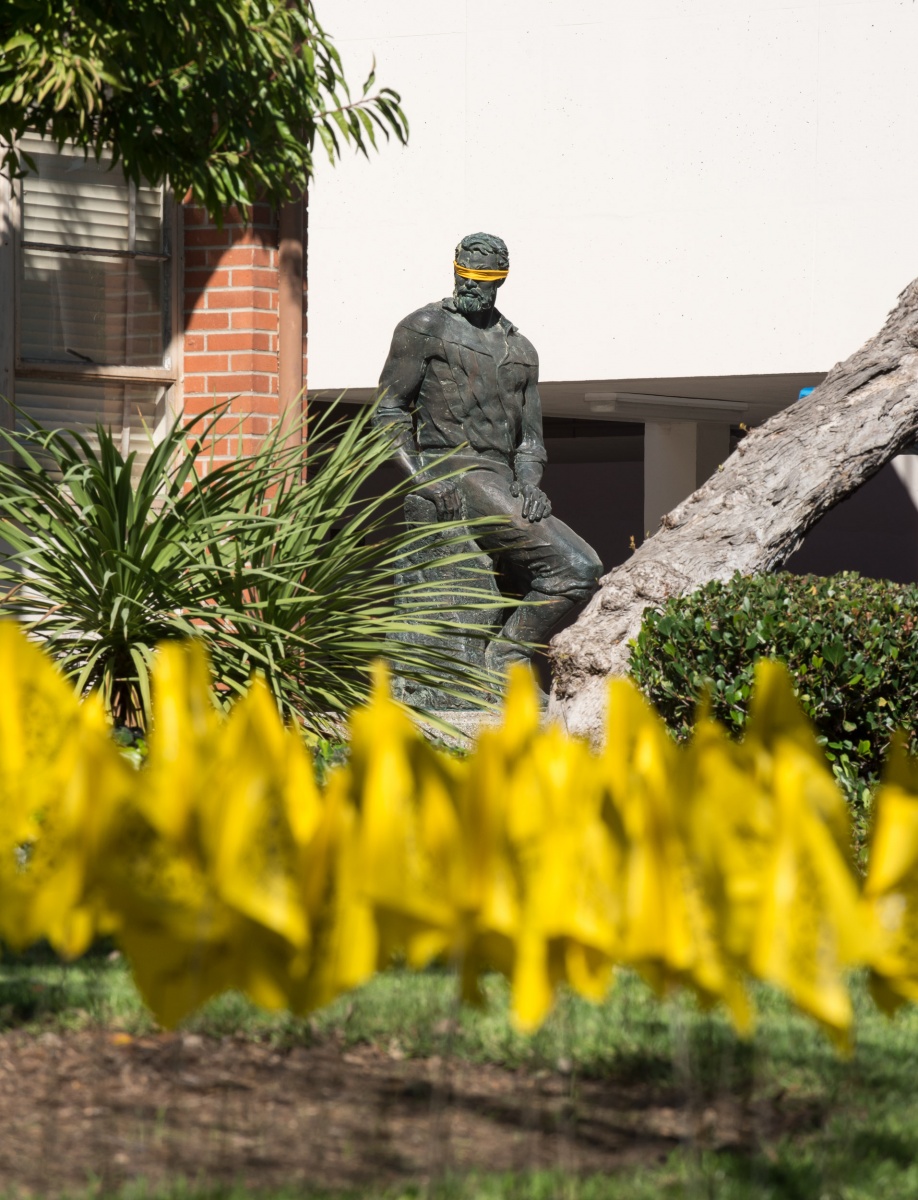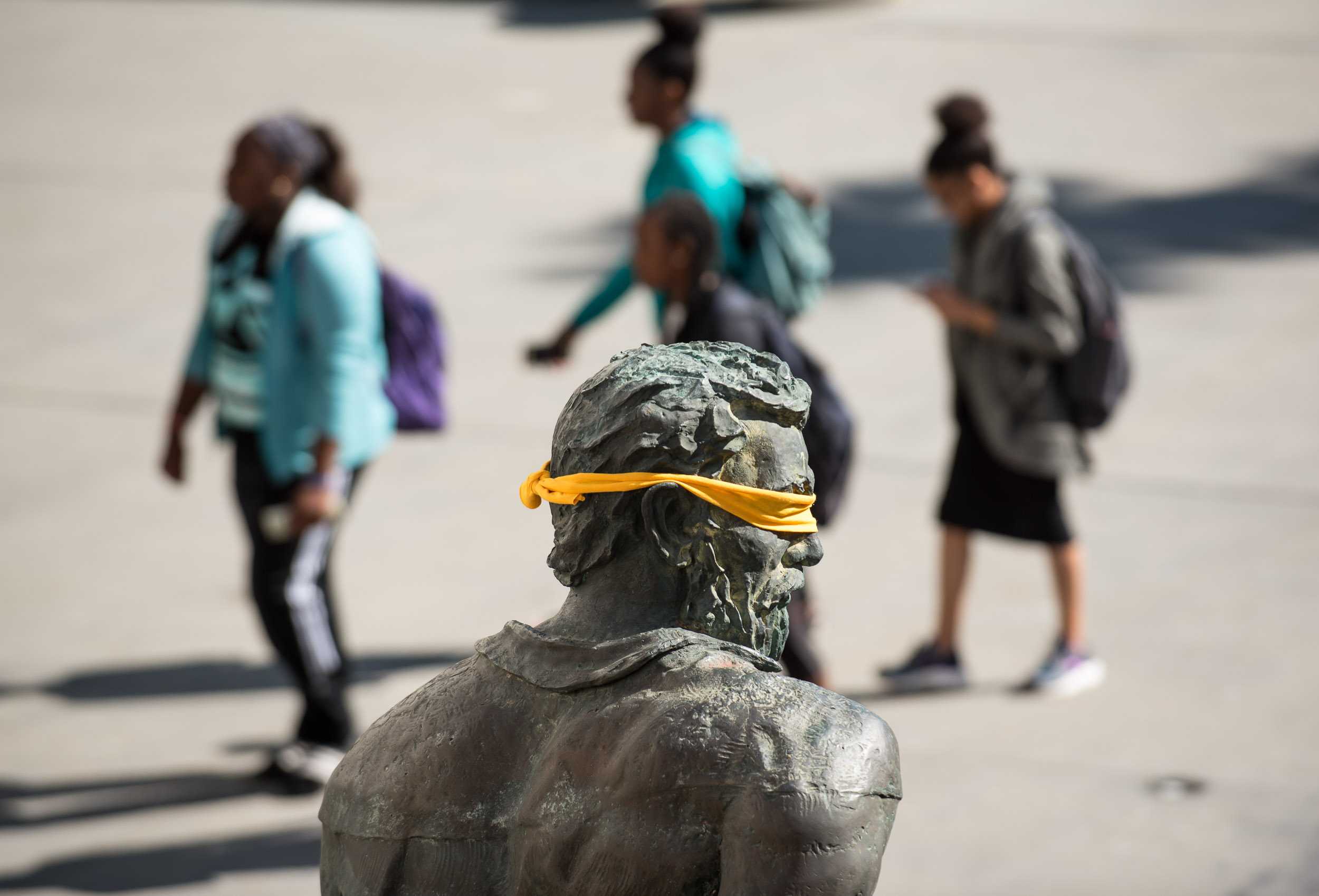Native American Heritage Month on display
Prospector Pete sits blindfolded, a yellow cloth wrapped around his head, a symbolic demonstration of how early California settlers turned a blind eye to the number of indigenous people who died during the Gold Rush period.

Nearby, dozens of small yellow flags set in a nearby grassy area, representing the dwindling number of American Indians as a result. The art installation is one in a series of events that are in recognition of Native American Heritage Month and will be on display until Nov. 30. Put on by the American Indian Studies program, it also helps promote Genocide Awareness Week.
Program director Craig Stone said most historians claim that disease, not genocide, was the main reason Indian tribes diminished in the Americas. Research, however, continues to show that the decline of the California Indian population during the Gold Rush meets both of the United Nations definitions for genocide. He added that few know the history of the California Indians' demise because it is seldom taught in schools.
“Each of those flags has the words 'count what you value' in the Tongva language, and it represents 300 American Indians," Stone said. "Before the Gold Rush, there were 150,000 California Indians and by the end there were 30,000.
"By 1900, you can see the decline.”
CSULB is built on the sacred site of Puvungna.
On Wednesday, expert Abe Sanchez will hold a talk on indigenous arts and foods at the Anatol Center. The monthlong celebration will conclude with an interactive workshop at the USU Ballrooms that honors traditions through social dance.







